This week I headed up into the New Forest and had a particularly good day spotting wildlife. I was only about a mile from the edge of my hometown of Ringwood but hardly saw any other humans.
I headed to the edge of Kingston Great Common Nature Reserve, not far South from Smuggler’s Haunt car park. Almost immediately after crossing the road I felt surrounded by heathland birds. There were plenty of stonechats perching on the top of gorse bushes.
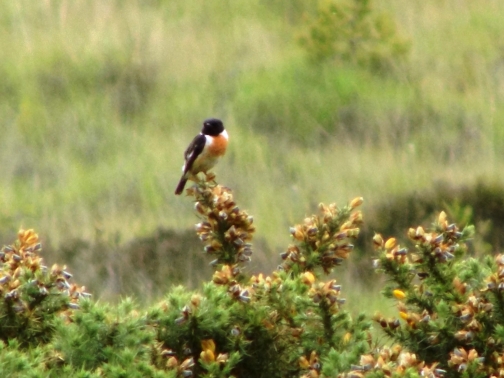
The name comes from their call, supposedly like the sound of two stones being hit together, though I’m not convinced they sound anything like that. This is a male as they have darker heads and a brighter breast.
Another bird which seemed to be numerous in the area were meadow pipits.

These pipits look quite like thrushes but are much smaller. I witnessed several pipits performing their spring display flight where they flutter in midair for a few seconds before diving down. It’s a fairly common bird which you might even see in suburban parks but numbers are declining so it’s on the “amber” list of conservation concern.
The other bird species I saw was the elusive dartford warbler. I came very close to getting a good shot this time but alas, it was not to be…
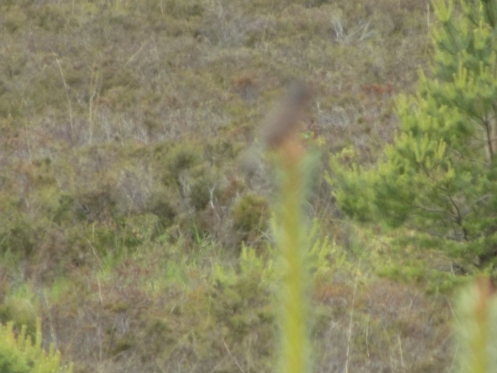
Let’s move on swiftly. Though the area is mostly covered in heather and gorse with the occasional small tree, there are some interesting plants to be found. This is one of the areas of the New Forest which is very boggy, providing an important habitat for many species. One is cottongrass, a plant that I imagine was very easy to name.

It’s technically not a grass at all though and is a member of the sedge family. They were once used to stuff pillows and mattresses, for making candle wicks and even for dressing wounds in the First World War. They grow successfully in boggy areas and spread their seeds using wind dispersal.
Another more unusual plant in this area is the sundew.
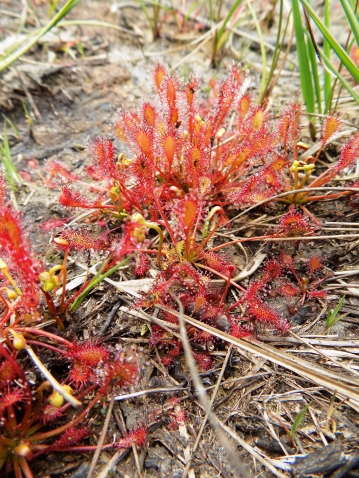
These are insectivorous plants. They grow in nutrient poor soil and obtain the nutrients they need when insects become stuck to the sticky hairs. The leaves curl over the insects where the dew drops act as digestive juices to dissolve the insect’s body so the liquid can be absorbed by the plant.
Speaking of insects, there were plenty of those in the area too. One particularly striking species which seemed abundant in the area was the green tiger beetle (Cicindela campestris).
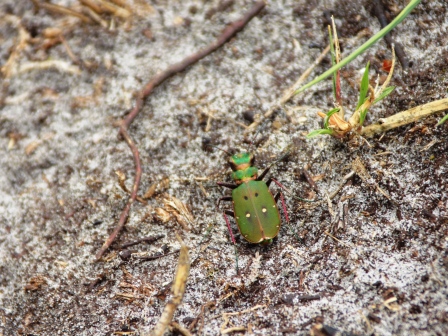
These are actually fearsome predators that are agile flyers with large mandibles. They like bare patches of ground as these warm up quickly in the sun and this warmth means they can be faster and therefore hunt more efficiently.
There were a few dragonflies around the Forest during my visit and one I saw more closely was this female keeled skimmer (Orthetrum coerulescens).
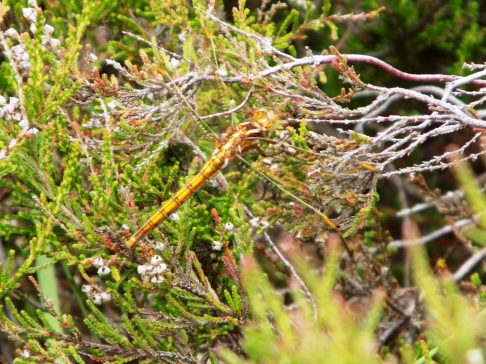
It made sense to see this here as this species breeds in peat bogs.
I saw plenty of moths fluttering amongst the heather and eventually managed to photograph one- this is a common heath moth (Ematurga atomaria).
These are common moths whose caterpillars feed on heather. They are day flying moths which usually have one brood a year, though it is not uncommon for them to have a second brood down here in the south.
All in all, it was a really great day in the New Forest. That’s all for today but I’ve got plenty waiting to be shared with you so there will be another post on Wednesday- see you then!

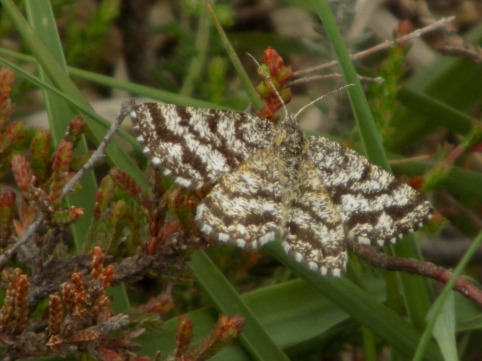
No comments:
Post a Comment